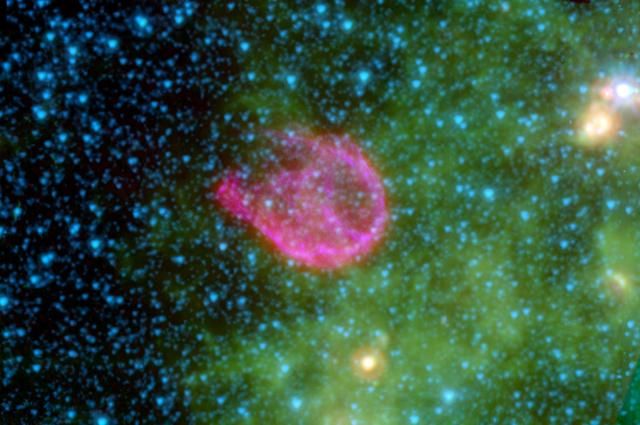Shrapnel From Relatively Recent Supernovae Found in the Earth’s Crust
By Andy Tomaswick
A Japanese oil exploration company recently dug up some samples from the Pacific Ocean floor and donated them to researchers. Those researchers, led by Dr. Anton Wallner at the Australian National University, then found the first ever evidence of a plutonium radioactive isotope that originally came from outer space. Now scientists are trying to understand what could have created that isotope, and another intriguing extraterrestrial one, and what that might have meant for Earth’s cosmic neighborhood a few million years ago.
In addition to the plutonium, Dr. Wallner and his team also found a unique form of iron. That iron isotope also appears to have come from a different source than the plutonium recovered from the same sample.
Credit: Ars Technica YouTube Channel
The iron isotope, iron-60, is the more common of the two radioactive isotopes found. It has a half life of around 2.6 million years, but has been found in rocks, moon samples, and even snow. Given the (relatively) short half life of this form of iron, it seems clear that the samples that were found in various places around the globe were not part of the material that formed Earth approximately 4 billion years ago.
Iron is one of the heavier elements, and this particular isotope of iron is likely to be made in a supernova. Dr. Wallner and his team also compared the iron-60 in their recent sample to those described previously and noticed that they likely came from different supernova events. One took place approximately 3 million years ago, while another took place approximately 6 million years ago.
The iron-60 created in these explosions made its way to Earth where it rained down and eventually was absorbed into the sea floor. Such an active nearby cosmic neighborhood is much different than the current calm patch of the galaxy our planet is sailing through, and has implications for the evolution of life as well as the chemical makeup of the Earth itself.
Even more intriguing is than the iron is the plutonium. The specific isotope Dr. Wallner and his team found is actually the most stable of the plutonium isotopes – P-244. However, it doesn’t exist naturally on Earth, so finding it in terrestrial rocks means that it was created somewhere else.
For much heavier elements, such as plutonium, most scientists think even a supernova isn’t powerful enough to create them. The current hypothesis is that extremely heavy elements are created in extraordinarily violent events such as the merger of two neutron stars, which can also produce gravitational waves.
However, this is some of the first evidence for a violent event happening near enough to Earth that the planet itself was seeded with this relatively short-lived isotope, whose half-life is 81 million years. This conundrum can be solved one of two ways – either scientists have to rethink the creation process of plutonium-244, or they need to reassess whether the Earth was close to an immense explosion sometime in the not-too-distant past.
Credit: Royal Astronomical Society YouTube Channel
Either way, these findings have been celebrated in the scientific community as the culmination of years of searching for exactly these kinds of samples. The world can thank a Japanese oil exploration crew for digging up one of the most interesting pieces of rock they could have. We can also look forward to more evidence helping to inform the creation story of these otherworldly radioisotopes.
Learn More:
ANU – Alien radioactive element prompts creation rethink
OPB/NPR – Freshly-made plutonium from outer space found on ocean floor
Science – 60Fe and 244Pu deposited on Earth constrain the r-process yields of recent nearby supernovae
UT – A Supernova Exploded Dangerously Close to Earth 2.5 Million Years Ago
UT – Exploding Stars are Titanium Factories
Lead Image:
False color remnant of a supernova N132D.
Credit: NASA / JPL-Caltech / Harvard-Smithsonian CfA
The post Shrapnel From Relatively Recent Supernovae Found in the Earth’s Crust appeared first on Universe Today.

May 22, 2021 at 12:48AM
via Universe Today read more...

Post a Comment